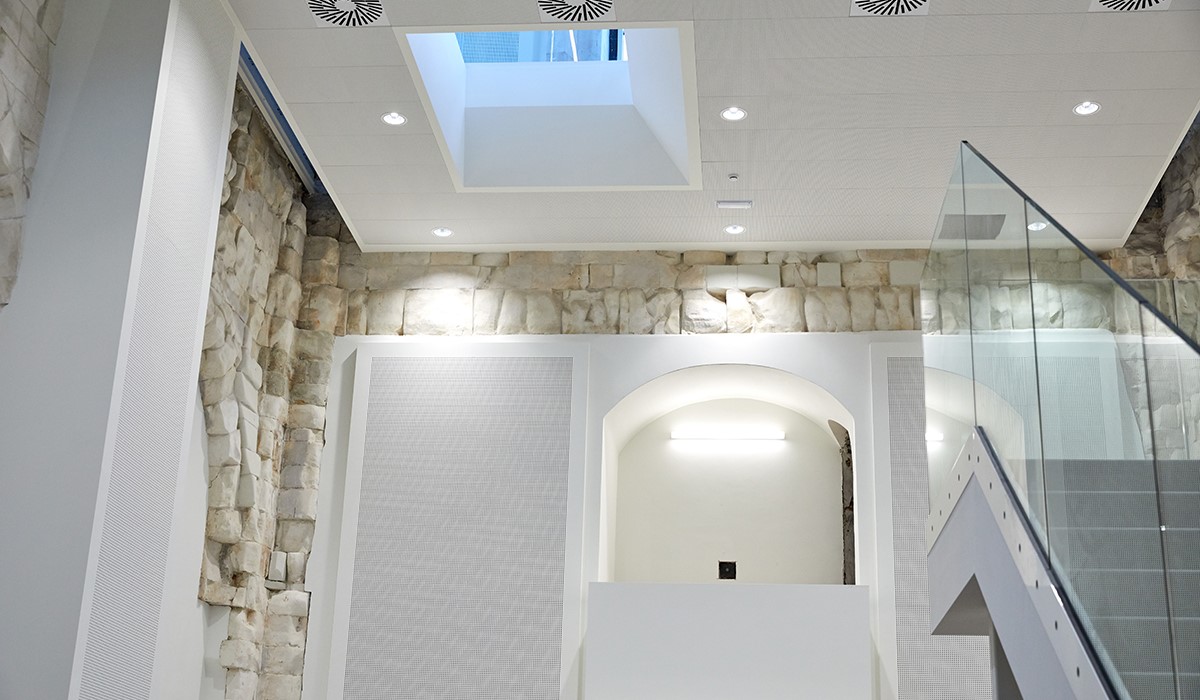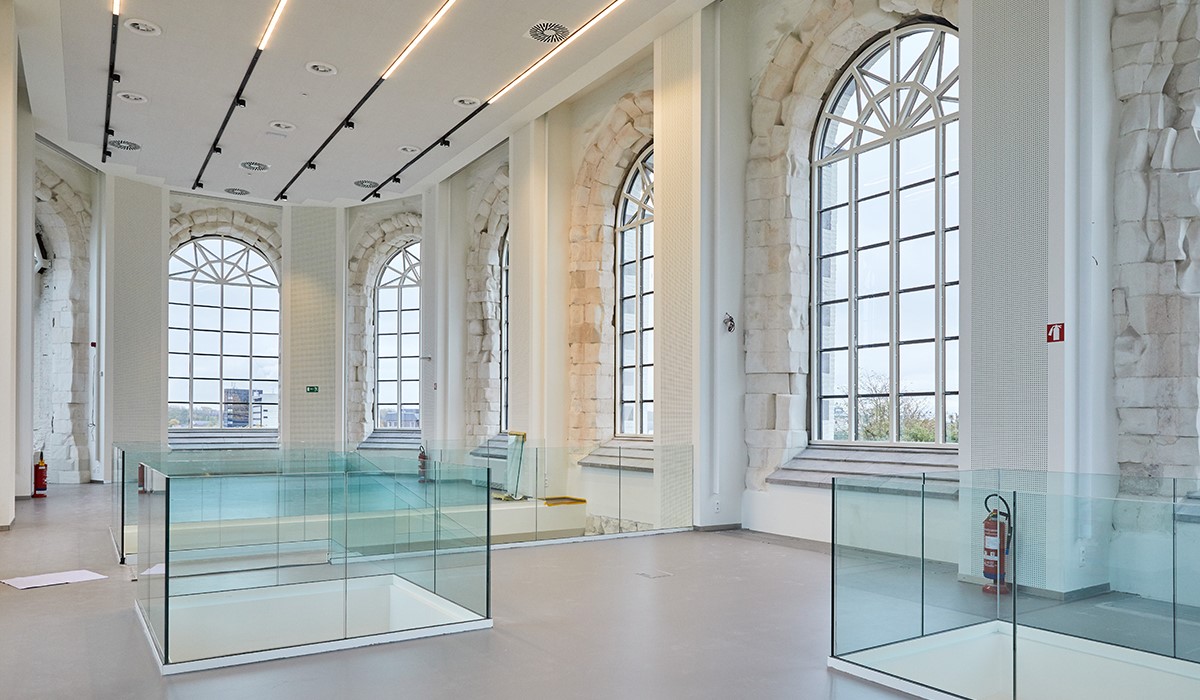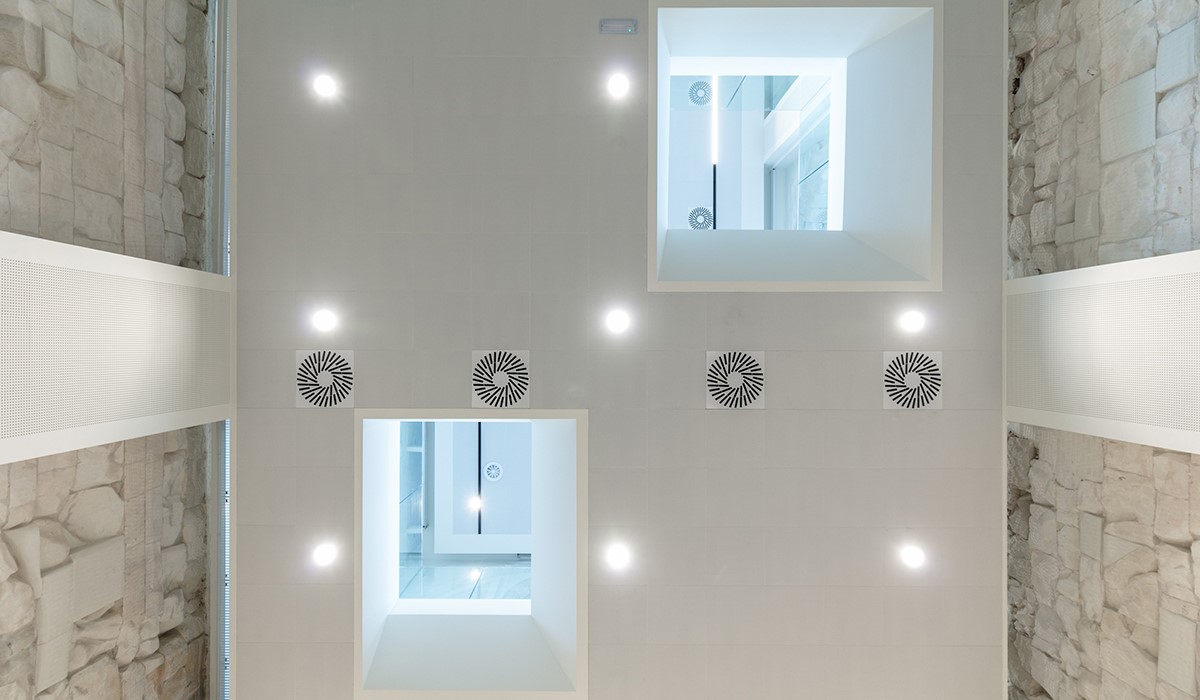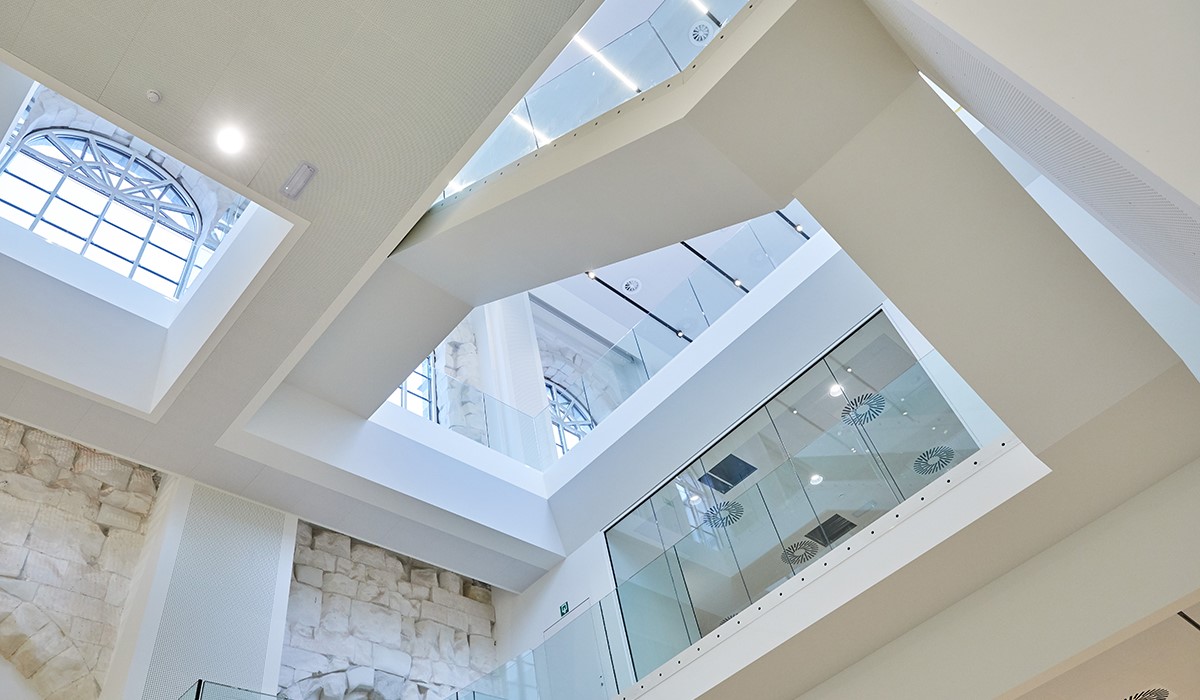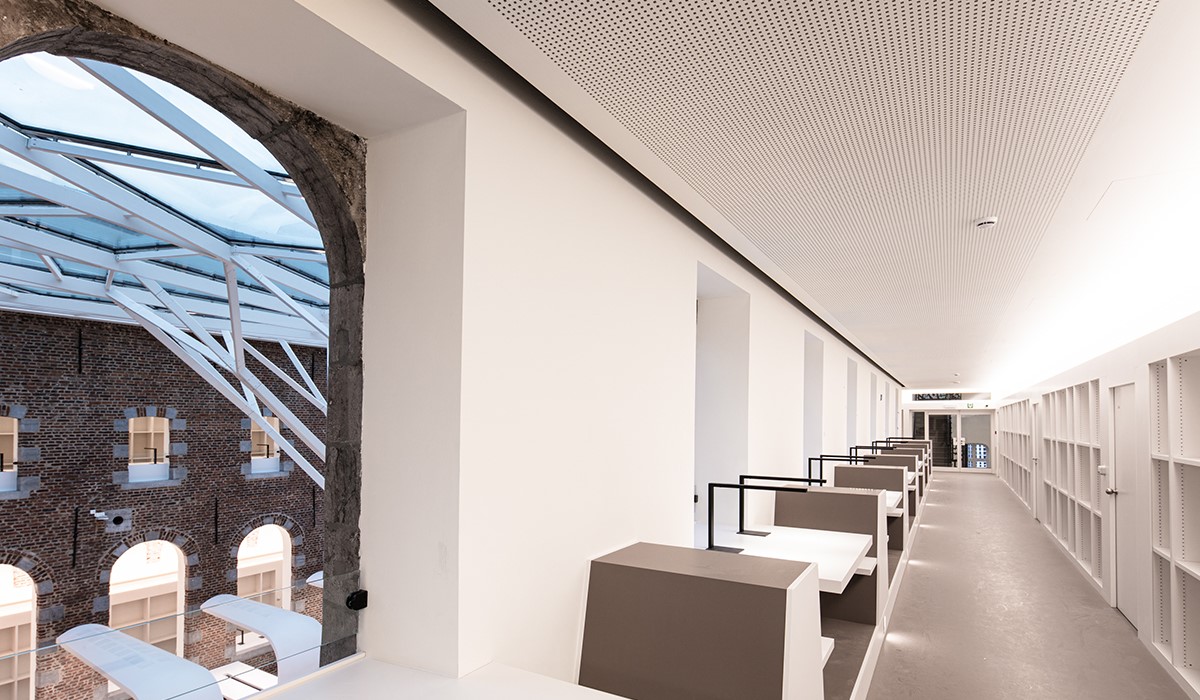Gone are the days when interior aesthetics had to be sacrificed for good acoustics. Evolving technology and design allow architects to explore innovative acoustic solutions that blend beauty and functionality. Aesthetics always mattered - visuals are the first to be noticed and appreciated in a space. But acoustic comfort and indoor climate as a whole are gaining more attention to accommodate people's needs and ensure their well-being.
How to blend aesthetics and functionality in acoustic architecture

Acoustic design is no longer bulky
Acoustics were once associated with bulky design with few aesthetic choices and a lack of flexibility - something between thick padded walls or ceilings resembling egg cartons. That may be why acoustic design stayed in the background for a long time.
Building owners and architects either skipped acoustic design altogether or sought the simplest solution to mute noisy spaces. Today, studies show that poor acoustics can cause discomfort leading to stress and even more severe health problems such as tinnitus or hypertension. We now know that good acoustic design is essential to any building, be it an office, an opera house or a private home.
Designing a building that looks and sounds good
That’s the dream, isn’t it? To strike a balance between aesthetics and acoustic functionality. This goal is much more achievable if acoustic demands in a building are addressed at the beginning of the design process.
Most noise issues are only noticed and resolved long after construction is finished, which makes it challenging to find an acoustic solution that works and fits in with the existing interior design. The earlier acoustics are considered, the easier it is to match and shape acoustic materials to make the building sound as good as it looks.
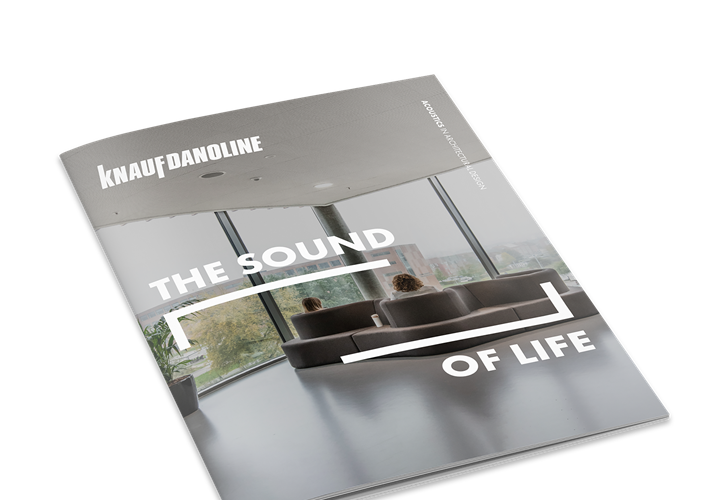
The Sound of Life: learn more about acoustic design
In this ebook, you can dive deeper into how acoustics affect our everyday lives no matter where we spend our time: at home, at work or at school. Learn how important it is to consider the acoustic properties of the materials you choose to install, and how you can ensure the optimal design from the beginning of the design phase.
Finding the right acoustic materials
Because indoor spaces are mostly built with hard, highly reflective materials, acoustic design must include softer, porous materials to absorb and reflect sound waves to reduce noise and facilitate communication. People occupying the space should be able to interact without straining their voices but have speech privacy when needed.
Here are vital questions to ask when looking for suitable acoustic materials:
- Does it enhance both speech and listening comfort?
- Does it help facilitate a healthy indoor climate with no degassing from ceilings?
- How well does it optimise daylight?
- How long will its properties last?
- Can it be easily repainted?
- Is it recyclable after the end of its service life?
- Does it complement the overall aesthetics of the building?
No matter the building, we should be surrounded by safe materials that improve sound and air quality in a room and look good years later. Every room deserves a beautiful acoustic solution that stands the test of time.
How stunning aesthetics and acoustics were merged at the Library at the University of Mons
The University of Mons in Belgium transformed an old monastery into a library and needed a versatile acoustic solution to complement the unique merge of old and modern design elements. Architects behind the project mobilised all their know-how to ensure a completion almost entirely carried out with Knauf DANOLINE acoustic materials.
The challenge: Integrating modern acoustic technologies with respect to heritage
The library at the University of Mons is a modern learning space with the serenity of an ancient convent. It is an impressive building that needed a unique acoustic solution. Above all, it was necessary to preserve the impression of grandeur, height and depth that strikes the visitor.
Acoustics and aesthetics had to work in tandem to offer students and visitors all the serenity that befits this type of building. The architects faced the challenge of integrating modern technologies and materials while preserving and respecting the heritage of 17th-century architecture.
The university's requirements in terms of temperature and humidity had to be met as well, together with an accessible ceiling, because of the need to regularly lay new cables and modify the networks to always remain at the cutting edge of technology.
The solution: Suspended gypsum ceilings with different perforation designs
After in-depth acoustic research, the architects behind the library chose Knauf DANOLINE acoustic panels made from perforated gypsum because they provided a discreet solution to blend in with the architecture of the place.
A large-scale project was carried out to ensure acoustic comfort in various spaces and rooms. Acoustic ceilings and walls with different perforation types were installed throughout the building to achieve the desired acoustic comfort and aesthetics.
The architects opted for removable ceilings to hide inspection hatches, pipes and air vents, among other technical details, to avoid harming the aesthetics and breaking the monolithic effect.
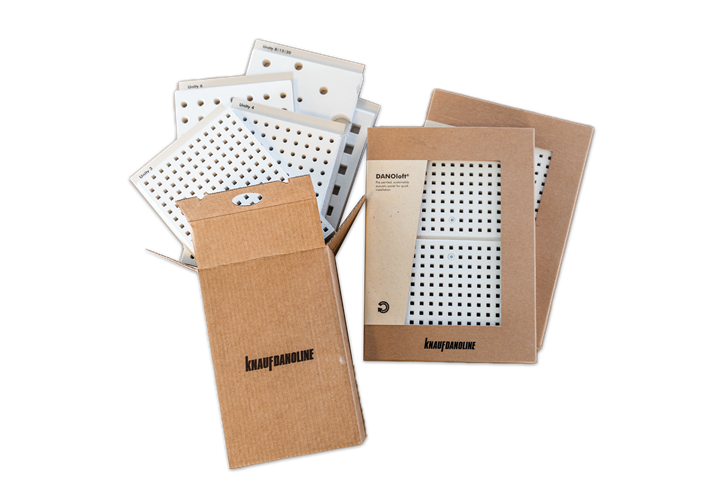
Order a sample and feel the quality
If you want to see, touch, and try out our Danoline products, you can order a product sample here. All our ceilings and walls are sustainable, certified and easy to install.
The result: Stunning acoustic design that melts into the grandeur of the building
The end result is a stunning, bright space with high-quality acoustics to ensure a serene and pleasant atmosphere at the library. Knauf DANOLINE elevates the architectural design of the place without disrupting its ancient details.
Once entered, the renovated library produces an awe-striking effect. The acoustic design is immaculately white and perfectly complements the rest of the interior.
"Initially, we planned a fixed ceiling, but the university representatives needed to make changes in the ceiling cavity. So we had to find a demountable ceiling without compromising the aesthetics. We wanted a monolithic effect. That's how we opted for Contur+ tiles from Knauf DANOLINE."
See the beauty of everyday life with Knauf DANOLINE
At Knauf DANOLINE, we believe that aesthetics and comfort go hand in hand. Perforated gypsum is at the base of our products. With perforation right down to the edges, we give the material its acoustic function and aesthetic character, creating a contemporary, monolithic look.
The robust nature of the gypsum material allows the acoustic panels to maintain their aesthetic and functional quality throughout the lifetime of the building.
Gypsum acoustic materials are safe and healthy for any building or space. Our triple A formula: acoustics, air, and aesthetics guarantee top-quality indoor comfort for students, patients, office workers and daycare children.
Our local consultants are ready to help you
Do you want to know more about the design possibilities and the acoustical properties of our products? Get in touch, and our local Area Sales Manager will help guide you and answer any questions you might have.
